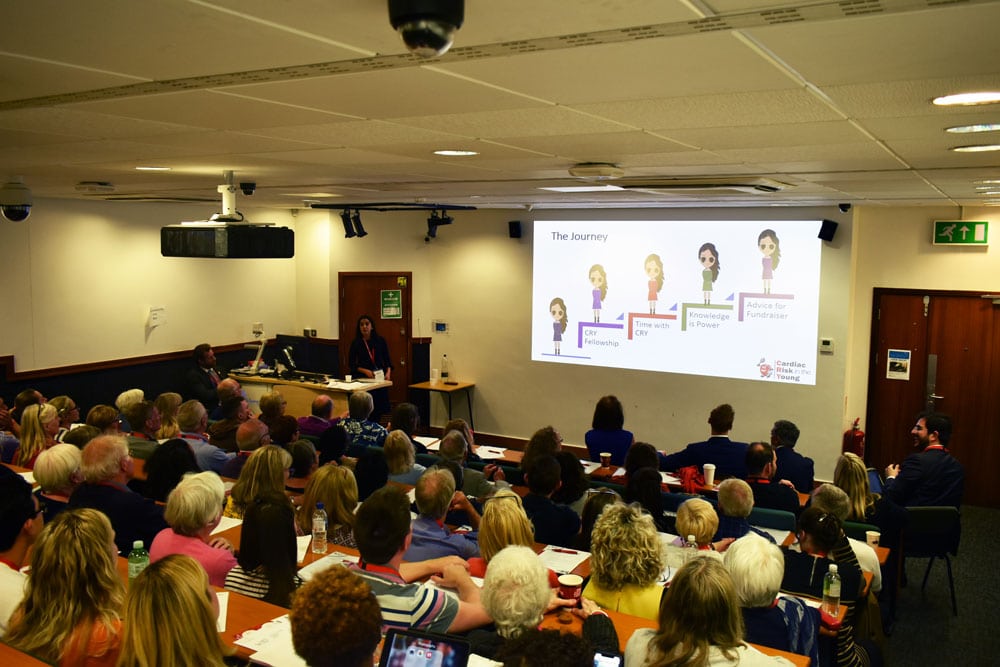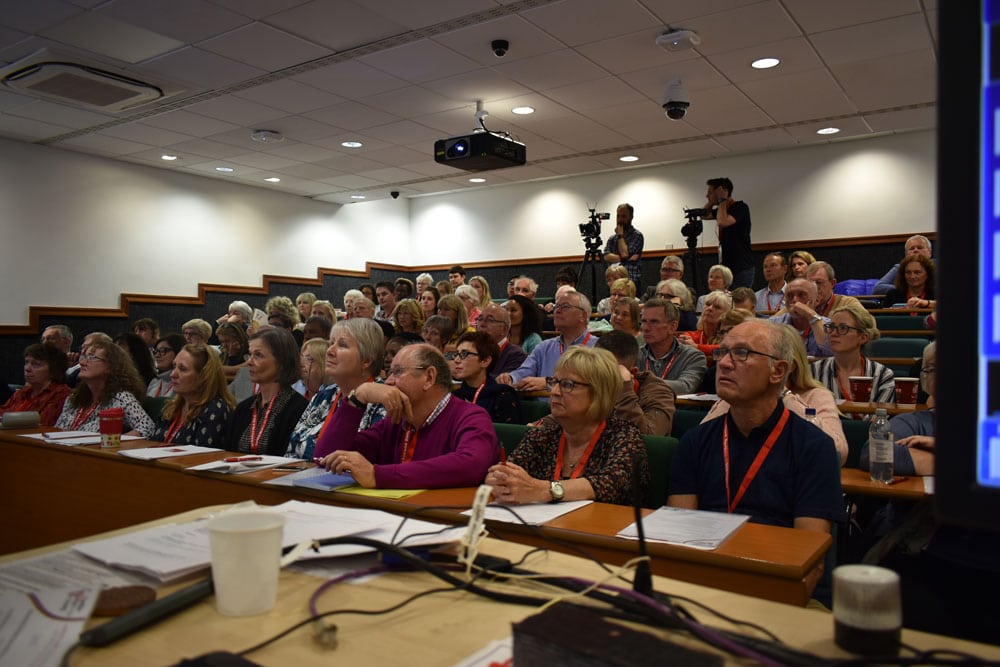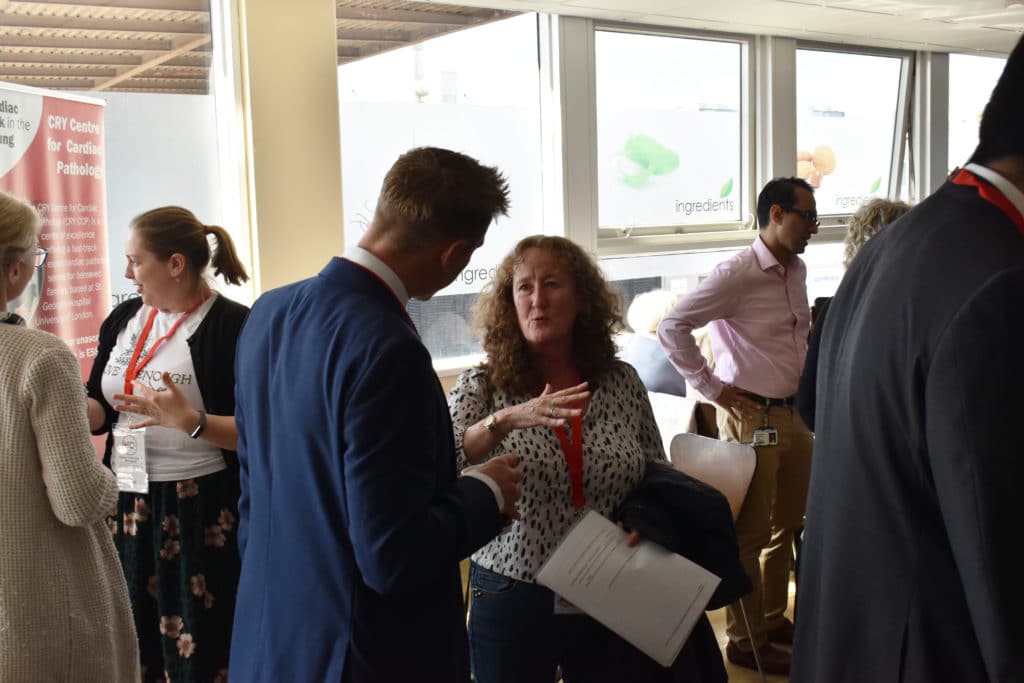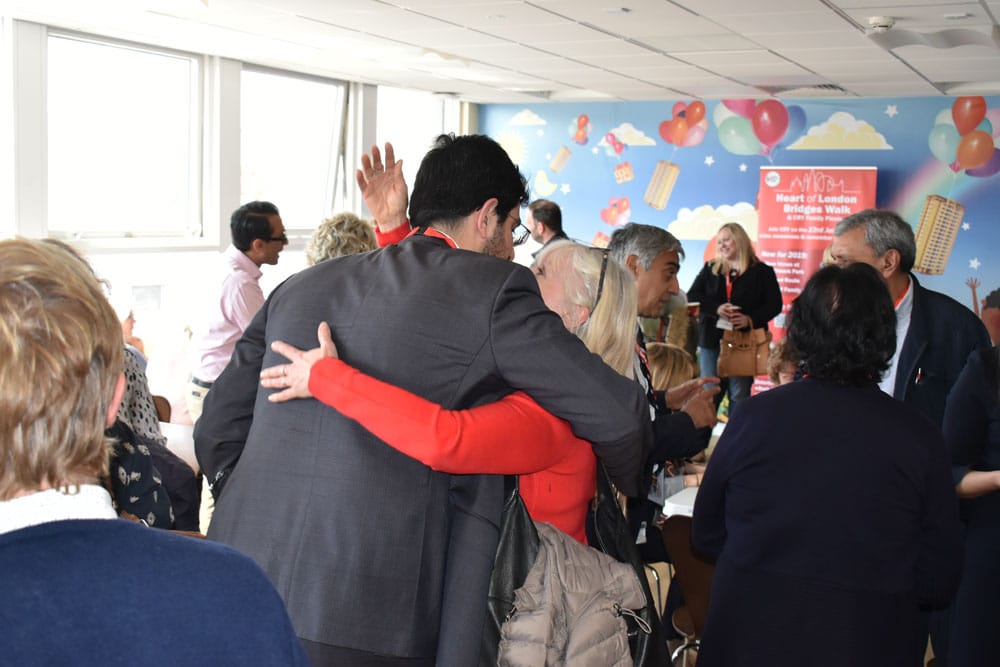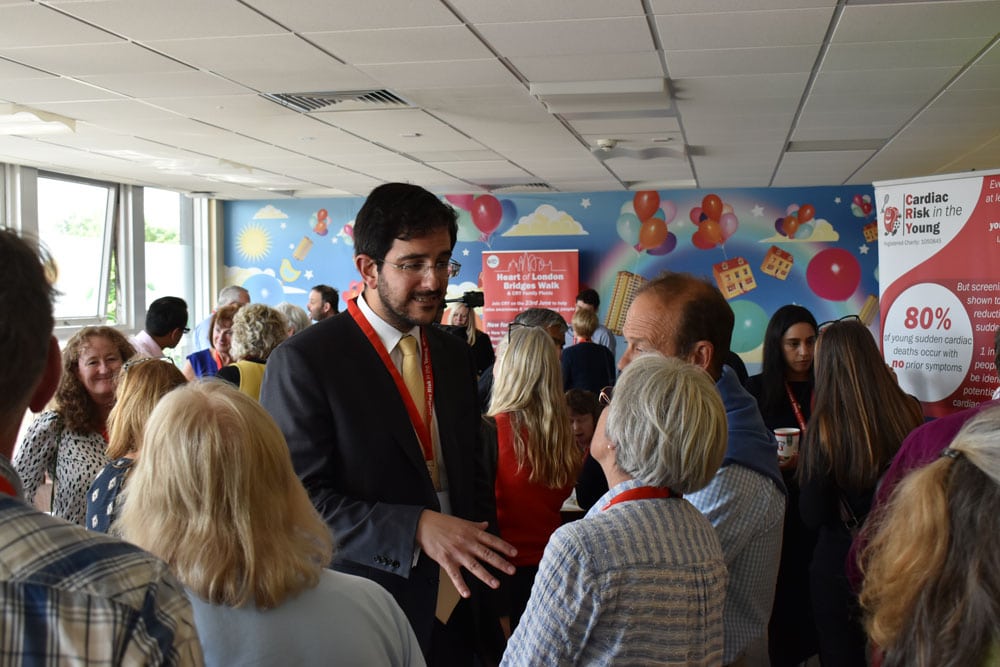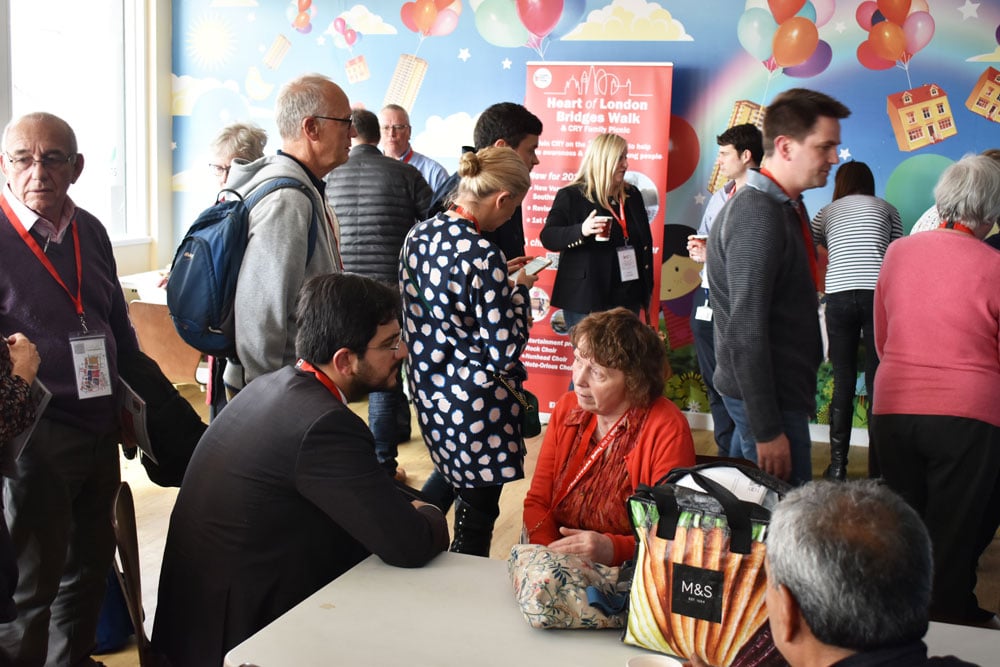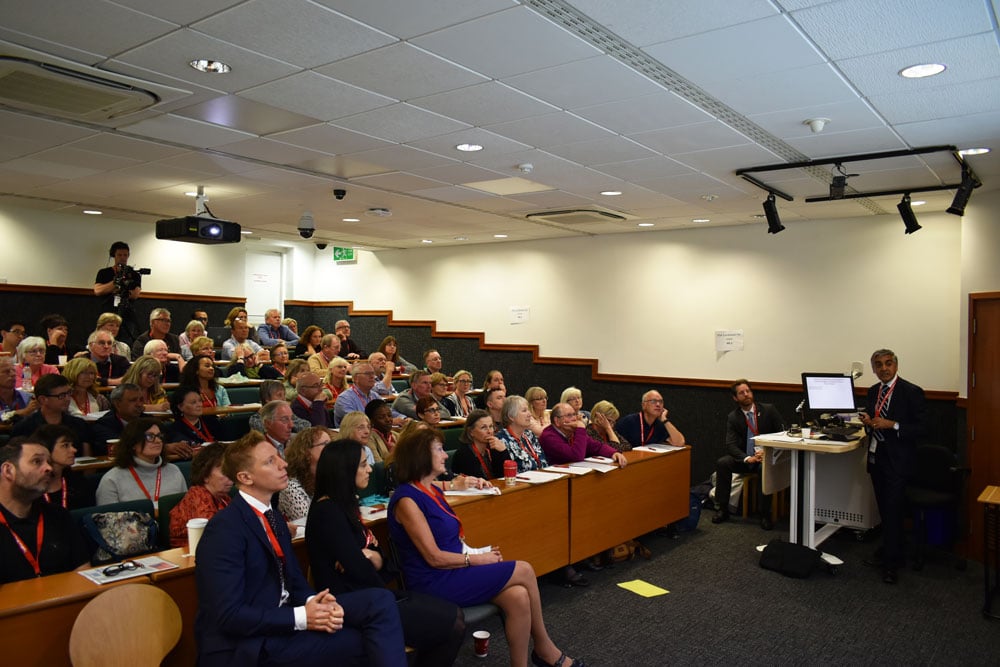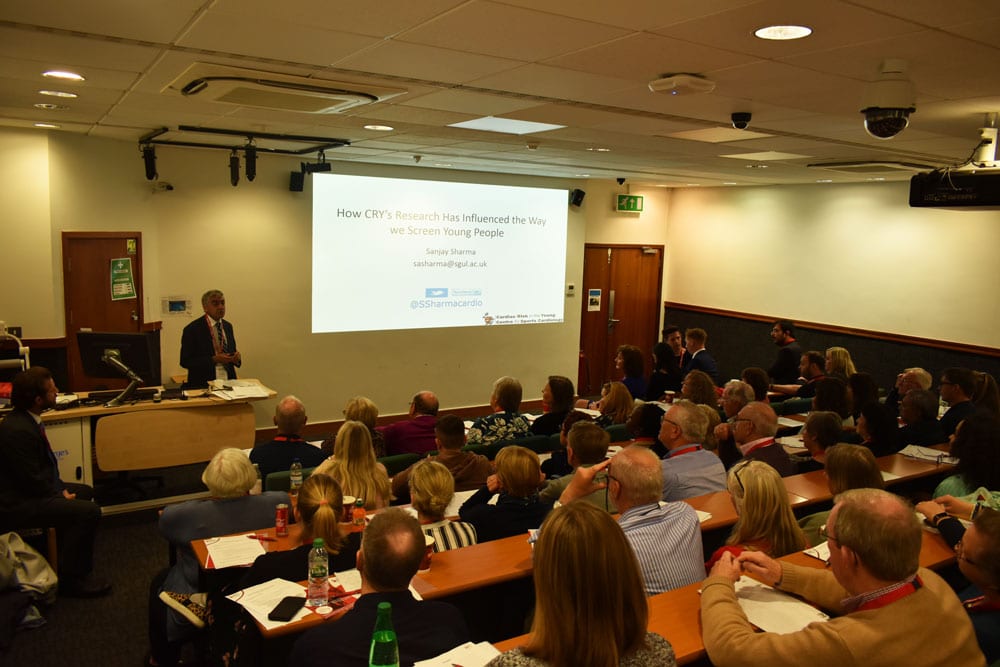The Impact of CRY's Research Programme
CRY’s research program is changing the way we understand, diagnose and manage conditions that can cause young sudden cardiac death (YSCD)
#CRYResearch
CRY’s first Family Research Day
On May 11 we hosted the first CRY Family Research Day, giving some of our supporters a chance to learn more about the massive impact of our research.
CRY Chief Executive Dr Steven Cox began the day with a brief overview of how our research and team of specialists have developed over the years, CRY doctors and Research Fellows shared their insight on a variety of subjects.
Dr Sabiha Gati described what it means to be a CRY Research Fellow. She shared what her time with CRY involved, from serving as a specialist at over 80 screenings throughout the UK to reviewing referrals in CRY clinics (primarily inherited cardiac diseases at University Hospital Lewisham). Dr Gati’s research focused on the structural changes within young, exercising individuals’ hearts. The study garnered worldwide interest and Dr Gati went on to receive a host of prizes. Since completing her time as a CRY Research Fellow, Dr Gati has moved on to become a successful consultant cardiologist. She has also started an educational training programme for GPs throughout the UK as a new initiative under CRY, which trains GPs how to better analyse abnormal ECGs for young individuals. With her impactful research and the work she has continued since, Dr Gati is a fantastic example of how valuable our Research Fellows are.
Professor Mary Sheppard spoke next about her role at the CRY Centre for Cardiac Pathology (CRY CCP). Professor Sheppard first shared a little information on how much work the heart has to do and exactly how it functions, before moving onto how her work as a pathologist involves looking at the abnormalities in the heart muscle.
With Dr Tim Bowker, who is now one of CRY’s Trustees, Professor Sheppard produced one of the first surveys of sudden, unexpected cardiac death in the UK. “It was the first paper, really, to emphasize the entity of sudden adult death, or sudden arrhythmic death,” Professor Sheppard explained. “Because up until then [1994, when the survey was carried out] most people believed you died of coronary artery disease… We found that, no, in a significant number of sudden unexpected deaths, 7%, the pathologists found nothing…
“The Fellows and the clinicians and cardiologists have now begun to expand our knowledge of these causes. This paper was seminal in telling pathologists when you find a sudden death – a young person, heart is normal, toxicology is negative – you have to do further investigations. You cannot simply leave it unexplained or unascertained.”
After discussing some of her earlier work, Professor Sheppard went on to explain how the CRY CCP has excelled even more since moving to St George’s Hospital in 2014, becoming the largest pathology unit dealing with sudden cardiac death in the world. The CRY CCP has changed the way we understand and prevent young sudden cardiac death.
CRY myheart cardiologist Dr Michael Papadakis followed, looking at how CRY’s research has changed the way we investigate families after a young sudden cardiac death. Dr Papadakis explained everything that goes into this kind of assessment, the characteristics of SADS victims, why there is a high prevalence of Brugada Syndrome, and the characteristics of various conditions like hypertrophic cardiomyopathy (HCM) and idiopathic left ventricular hypertrophy.
To finish, Dr Papadakis emphasised how important teamwork is in all areas to research these conditions and complete the necessary testing for people all around the UK. “It’s multi discipline teamwork,” Dr Papadakis said. “A cardiologist cannot do it alone. We also need, apart from the geneticist and the pathologist, our nurses, our genetic counsellors, the GPs – very important, those are the individuals who’ve been dealing with the family for many years and will continue dealing with that family, so they need to keep very well informed. And obviously the psychologist and our patient groups, like Cardiac Risk in the Young, who support the families and also support our research.”
Finally, there was no one better to discuss how CRY’s research has transformed the way we screen young people than CRY Consultant Cardiologist Professor Sanjay Sharma. CRY began by facing opposition to the pursuit of cardiac screening across the UK. Professor Sharma listed some of the concerns and opinions others had, questioning the use for screening due to the supposed low incidence of sudden cardiac death, a high number of false positives, whether we have the necessary specialists, and the cost.
“This was never going to take off if it wasn’t for someone with the energy that Alison [Cox, CRY Founder],” Professor Sharma said. He also credited the vital work of CRY’s Research Fellows. “We had a battery of Research Fellows that have been through us, and all of these people [referring to seven Fellows shown in his presentation] are now consultants… and all contributed so much to the way that we interpret a young person’s ECG.
“Probably one of the proudest things that’s ever happened to me was that this 10 to 12 years of intensive research funded by all of [CRY’s supporters] culminated, for the first time in the history of sports cardiology, in something called the International Recommendations… i.e., if you used these criteria [to interpret ECG results] anywhere in the world, you were doing a good job.”
CRY research has also reduced false positive rates from 22% to just 3% in the white population. “So, [when] your family or your children have an ECG screening done by CRY, there’s only a 3% chance that we may say we need to do more tests,” Professor Sharma added. “And there’s a 1 in 300 chance that we’ll say to you there’s something wrong with your kid, and we can actually do something about it and prevent a sudden death in most people.”
Professor Sharma finished the event’s research presentations with a thank you to supporters, who truly make our research possible with their tireless fundraising efforts.
“I’d like to thank you all for raising so much money to support a charity whose mission it is to reduce young sudden cardiac death,” Professor Sharma said. “Your money has gone a long way into improving the way that we diagnose people, improving what we know about causes of sudden death, improving methods of risk stratification – i.e. when someone is diagnosed, how do you predict someone is going to die or not.
“Clearly there’s a long way to go. We want to minimize the risk of sudden death and there’s a lot to learn, and I hope for your continued support.”

